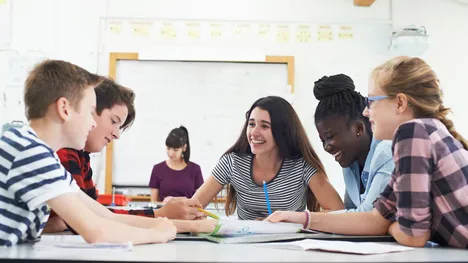News
Supporting High-Achieving Students through Differentiated Instruction?
News |

Students with different potentials and needs in one classroom and only a limited amount of time and resources for individual support. That is how reality looks like at many German schools. Teachers then often tend to focus on struggling students. However, most high-achieving students also learn in regular classes and benefit from individualized support.
Therefore, differentiated instruction in regular classes can be an important element for teachers. By implementing differentiated instruction, teachers can help to realize the potential of their high-achieving students and strengthen their abilities. At the same time, other students do not miss out. Differentiated instruction also has the advantage to help raise the learning level of the entire class. There are many different ways teachers can implement differentiated instruction.
How does differentiated instruction work for high-achieving students?
In general, differentiated instruction is a good way for teachers to realize the various individual potentials of students within a regular classroom. When it comes to high-achieving students, teachers can benefit from a variety of approaches developed for supporting high-achieving students and making use of them when implementing differentiated instruction.
- Grouping: Students (temporarily) learn together with classmates, who are also high-achievers, in one group.
- Acceleration: Students get the opportunity to learn content at an individual (faster) pace.
- Enrichment: High-achieving students further deepen what they have learned.
— Learning through differentiated instruction not only helps high-achieving students to perform better in school, but also increases their motivation and interest.—
Our research shows that teachers rarely use differentiated instruction to support their high-achieving students. Among other things, time constraints, a lack of experience, and administrative barriers contribute to this.
What teachers need in order to implement differentiated instruction is professional staff development through trainings or workshops. Also mentoring programs and fostering the collaboration between the teachers can help. To achieve this teachers need the support of the schools as well as necessary time and material resources.